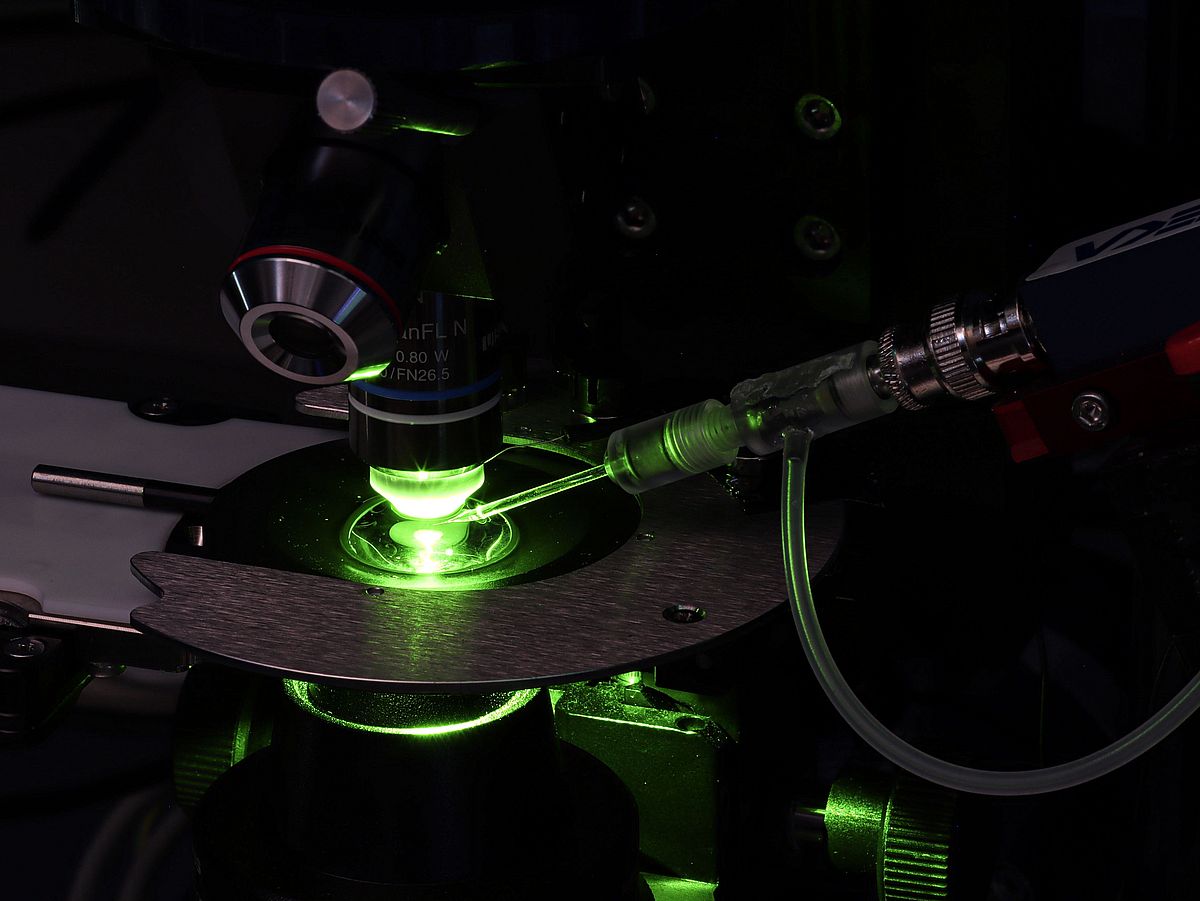Methods


Since nerve cells and some other cell types have electrical properties, it is possible to measure the electrical response of cells to pharmacologic and optogenetic manipulation. For example, it is possible to measure currents,
or voltage across the membrane. Our group uses the Patch-Clamp technique to investigate the change of the current produced by serotonin (5-HT). Therefore, we are using specific ligands and light activated 5-HT receptor chimeras.

Till now, methods to modulate 5-HT related signaling pathways with high temporal and spatial resolution are missing. A new method called optogenetics has recently revolutionized neuroscience research and is based on the idea to activate neuronal activity and signaling pathways by light. We have used different opsins to specifically activate intracellular signaling pathways with high temporal and spatial precision. We already developed serotonergic receptors (5-HT1), which allow the activation of the same intracellular signaling pathways as native serotonergic receptors by light.
Combined or seperated light-activation of the chimeric 5-HT1 auto- and heteroreceptors are used to control anxiety and depressive phenotypes in wildtype and 5-HT1 knock-out mice to understand the influence of GPCR signaling pathways in these disease states. With these new optogenetic tools we would like to understand in which way serotonergic signaling pathways mediate anxiety and depression. Hopefully, our research will help to find new therapeutic strategies to treat these diseases in the future.

Calcium imaging is a method to investigate and visualize actions in neurons in vivo in the brain during various behavioural tasks. Activated neurons show an elevation of internal calcium levels. To visualize this, calcium indicators (GECIs) which are based on the green fluorescent protein (GFP) are brought into the central nervous system via virus injection. The most commonly used GECIs are the so called GCaMPs, which we are also using in our laboratory. By using miniature microscopes, the fluorescent signal can be recorded and analysed.

To investigate neuronal diseases, it is unavoidable to preform behavioral tests within animal models. Depending on the focus of research our group uses different transgenic mouselines to manipulate specific certain cell types through optogenetic manipulations. According to the animal protection law, the animals are housed appropriate, with regular health checks. One common behavioral test of our lab is the Elevated-Plus-Maze-Test (EPM). The EPM is an anxiety associated test that consisted of four elevated arms which form a plus shaped maze. Two arms are open, and two arms are closed. The animal stays in conflict with the anxiety of height and the impulse to explore open areas. An indicator for the anxiety level is the time spent in the open arm. The more time the mouse spends on the open arms the less anxious is the mouse.
